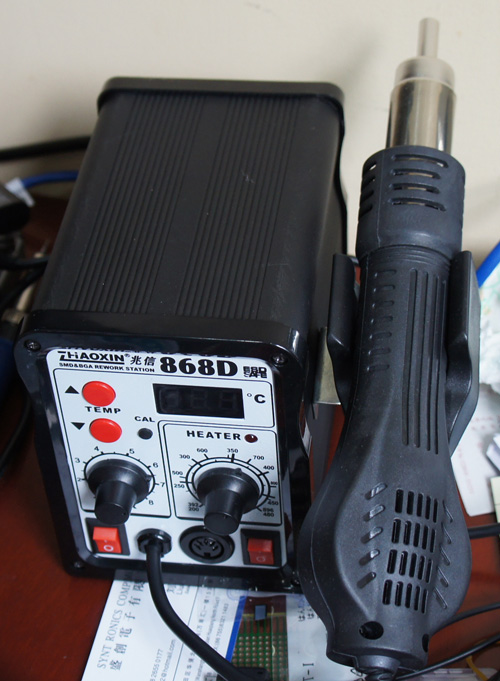The Ware for May 2012 is shown below.
I scored one of these in the markets of Shenzhen a couple months ago, after watching technicians at a factory use them with great effect. I’m curious as to how many readers have seen or used one of these.
The ware for April 2012 was 424C Key Telephone Unit, made by Western Electric around 1979. Its purpose in life was to provide an intercome path, with dial-selective signaling, in the 1A2 Key Telephone System. Here’s the explanation of how it worked, courtesy Bruce Lane:
The way it worked: A user would select the appropriate button on their phone for the intercom circuit, and go off-hook. They would then dial one or two digits, representing the number of the desired destination within their system (the card provided up to 19 available codes). The card provides talk battery, counts the dial pulses, and then fires off a one-second or so (it’s adjustable — note the presence of the pot behind the big transformer) burst of either 18 volts AC (for a buzzer) or 100 volts AC at 20-30Hz (for a ringer). The person at the other end picks up, and Vy-ola! You’re connected and chatting.
The intercom’s talk path was not private. Anyone else in the system, upon seeing the intercom line in use, could pick up and chime in on the call. The only thing selective about this unit was the signaling. Western Electric made efforts to improve on this in later years, with the addition of multiple intercom paths in the ‘ComKey’ series of hybrid (part electromechanical, part electronic) Key Telephone Systems, but this was right around the time PBX’s and electronic systems were really taking off. This rendered further development on such things moot.
Russ Dill was very close on guessing the ware first, and Yuubi found a closer match shortly afterwards — tough call on who should win, but I liked that Russ’ link included schematics, so I’ll declare Russ Dill the winner! congrats, email me for your prize!
The winner for March 2012 is MegabytePhreak! congrats, email me for your prize.

The ware is a Zhaoxin 868D hot air rework station, which combines both a soldering iron and a hot air gun into a single box. I purchased it for about US$19 in the Shenzhen electronic market.
When I travel to Shenzhen, I find it more economical to simply purchase equipment and dispose of it upon leaving, rather than the alternatives of paying bag check fees, or dealing with interrogation by security screeners. The iron actually has a nice bit of empty space on the inside, and the reason I had it opened up was to hide some valuables from cleaning staff while I was out. ‘Safes’ in Chinese hotels are often times not bolted to the walls, so putting your valuables in them is a bit like putting a big red arrow on your stuff that says ‘this is the box you should take’.